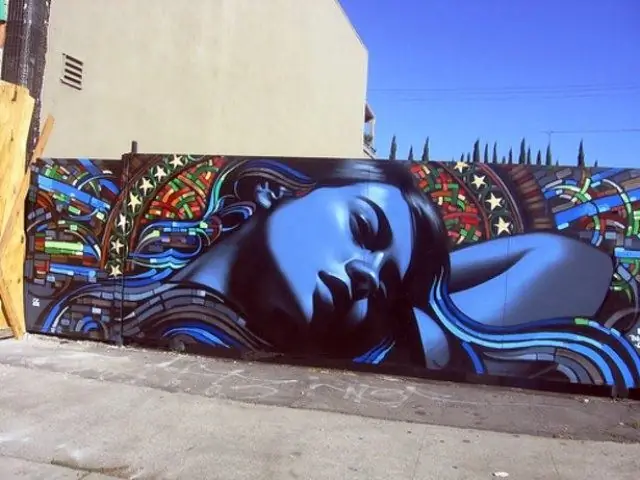Graffiti - drawings on walls and on fences - can be seen more and more lately. Colorful inscriptions, albeit not always clear, pictorial drawings, as well as stencil applications - graffiti can be very different. The main problem for artists, especially beginners, is choosing a place to paint.

Where you can't draw
Graffiti is by definition a public art. Here you cannot lock yourself in a studio, write a few masterpieces, and then exhibit them in a gallery. You need to choose a wall, preferably as noticeable as possible, prime it and apply a drawing. It is very good if as many people as possible see it.
There is only one problem: recently, several laws have been passed in Russia prohibiting painting graffiti in public places. Violators will face serious problems, as the amount of fines has been increased to 100,000 rubles. There are also more severe penalties - criminal. In especially severe cases, you can be imprisoned for up to 10 years! But this law regulates illegal painting of walls in public places, without prohibiting graffiti art at all.
Therefore, the first step is to find out where you shouldn't paint graffiti. These are all public areas, public buildings, fences of various structures and enterprises, various other people's buildings. In other words, you cannot paint on anything that is not your property until permission has been obtained to do so.
Where can I draw
The official position from the point of view of the law is such that drawing can only be done in specially designated places. For example, many municipal organizations are now inviting artists to paint boring building facades or paint on gray fences. Special graffiti festivals are held, during which street art representatives are given to "torn apart" large territories, where they can create as much as they want.
In addition, various festivals of street art, hip-hop culture and others are held in large cities. Often at such festivals, platforms are set up where you can draw. Sometimes artists are specially invited, making a whole show out of this. If you live in a big city, then find out about such events. You can be pretty sure you will find where to showcase your skills. And residents of small towns can be recommended to contact the organizers of various holidays and festivals (and they are everywhere) with a proposal to add graffiti to the program. It is useful to give examples of successful cooperation between the authorities and street artists from other cities.
If you find a good site in the city that appeals to you, try to find out who owns it. With permission from the owner, you can paint completely freely.
Where to train for beginners
There is only one problem: to get permission or to paint at festivals, you need to be able to paint the walls well. How do you learn this?
Practice on surfaces that belong to you. Perhaps you have a summer cottage outside the city, the old walls of the house and the fence of which need your drawings. You can also find various abandoned areas and structures, inside of which you can draw. Although these are not surfaces that belong to you, the chance that an owner will be found and opposed is practically zero. Wastelands, back streets, abandoned construction sites - all this can do. Of course, not many viewers will see your first creations, but you will get an invaluable experience. After that, you can move on to serious public platforms.






